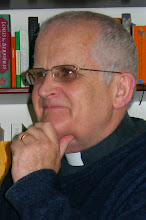C. Mark 3:7 – 8:21 Activity of Jesus around the Sea of Galilee
As readers, we have been introduced to Jesus, first in relation to God, through the activity of John and the activity of the Spirit, then in relation to Israel, with an initial unrestrained success and then a mounting challenge to Jesus’ honor/authority. Now we move into a major section of the story that is set on both the Jewish and the Gentile sides of the Sea of Galilee. Within the rich variety of early Judaism, a new family in a new home is formed around Jesus.
Mark 3:7 - 12 Transitional Summary: Healing by the Seaside
The previous major section (1:14 – 3:6) was introduced by Mark with one of his characteristic summary statements. The great crowds, from the south east to the north west of Galilee, serve to indicate the breadth of his support. The crush is so great that, once again, Jesus takes refuge on a boat. The evil spirits identify Jesus with the ‘Son of God,’ a designation we readers heard first in the prologue and then later heard from the centurion at the foot of the cross. Once again, the transitional Markan summary tells us the sort of things Jesus used to do and the sort of response he received. As here, they anticipate what is to come.
Mark 3:13 - 19 Calling of the Twelve
The twelve are called, they come and are appointed to do two things: be with him, go out and preach and have authority to case out demons – pretty much what they have seen Jesus do. That is the nature and extent of their appointment.
The twelve is a symbolic grouping that clearly has an appeal to the twelve tribes of Israel. It is an early institution (1. Cor 15:5) but it doesn’t survive for long. We note that it is one of several designations of, or groupings within, Jesus’ followers. Two others are “apostles”, which creeps in here and the more amorphous “disciples” and “followers” which we see in the in the larger context of Mark's story. It is not a tidy ordering or an exact distinction.
The lists of names of the twelve (cf. Matt. 10:2-4, Lk. 6:14-16, Acts 1:13) do not agree in the detail: the number 12 and the leading names (first four) are more consistent than the lower names and the rankings. The change of name for Simon (“Rocky1”) is significant. He seems to play the part of the “rocky soil”(4:5 cf. 6:52, 8:17) rather than the rock on which the church is built!
Mark 3:20 - 35 The Beelzebub Controversy & the True Family
The family set out (presumably from Nazareth 6:1-6) to "arrest" Jesus and bring him back home; they think he is “out of his mind, beside himself”. But the narrator has told us that Jesus is already at home. The family will arrive outside Jesus’ home in 3:31, forming a “Markan sandwich” where the bread and the filling mutually interpret one another (cf. the fig tree and the temple cleansing in 11:12-21). The various "home" references will lead into the definition of the true family.
The parable of the strong man’s house is the response to the charges that he is beside himself and that he is acting under the authority of Beelzebub. We readers know that Jesus has already defeated the strong man out in the wilderness (1:13) and we have seen the mopping up operations in the exorcisms. We are already exhibiting the viewpoint of Jesus’ true family and are at home with him. The origin of “Beelzebub” (or its many variants) is obscure and it is heaped around with a “density of descriptions of demons”(Donahue, 130) The parable deals comprehensively to all such accusations of an alliance with evil: it is absurd to think other than that the strong man has been dealt to by the mightier one, the “liberating agent of God’s deliverance” (Donahue, 131). Clearly the strong man’s house has been broken into and all his stuff has been plundered! We have watched this happen. Go figure!
The “blasphemy against the Holy Spirit” saying is linked with this charge that Jesus is acting outside himself, under the control of evil forces. Such an insult against the Holy Spirit arises from attributing the transforming and liberating power exhibited by Jesus to demonic sources. Those who make such a false linkage put themselves outside the action of the spirit and hence are closing the door to the possibility of forgiveness for ever; their hearts are hardened. “Have I committed this unforgivable sin?” is a question that can only be answered by “No!” It is not ignorance but false discipleship that is in the firing line here. The radical sin is the total loss of faith that aligns itself with the powers that have been broken by the Spirit empowered Jesus. It's a bit like shutting ourselves out of the loop of God's forgiveness.
By the time Jesus’ family has arrived outside Jesus’ home, we are ready for the new definition of family that is delivered to the new family members who are crowded inside: “whoever does the will of God is my brother, my sister, my mother.
”The reference to speaking to them “in parables” (3:23) provides us with a link forward into chapter 4 with its paradigm presentation and interpretation of the parable of the sower and the allegory of the seeds/soils.


0 Comments:
Post a Comment
<< Home